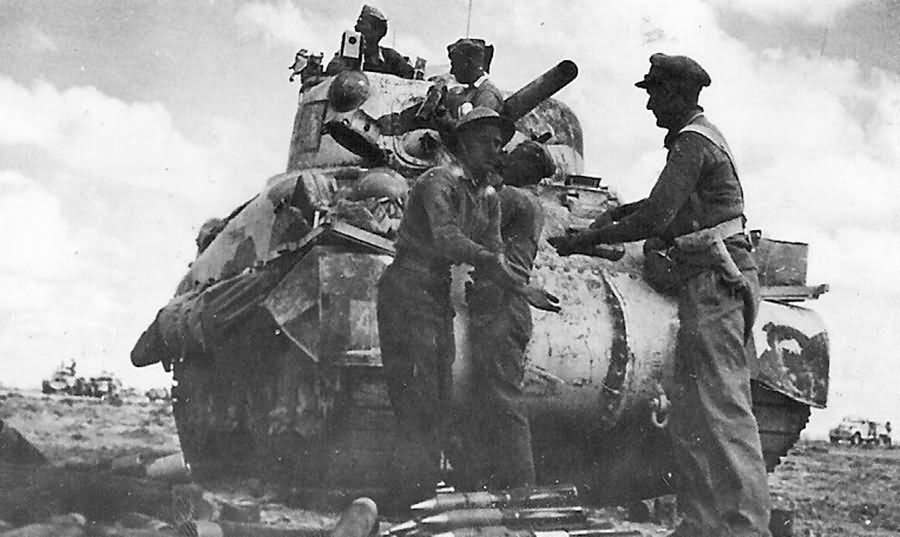After the defeat near Gazala in mid-1942, the British Eighth Army retreated toward the Egyptian frontier as Rommel’s forces quickly pursued and captured Tobruk on 20 June 1942. The fall of Tobruk was a significant blow to the British, as the defenders were disorganized after the retreat, and over 32,000 men and 2,000 vehicles were captured by the Germans.
Winston Churchill, who was in Washington with President Franklin D. Roosevelt when the news of Tobruk’s fall arrived, immediately requested U.S. support in the form of Sherman tanks. After discussions between Roosevelt and General George C. Marshall, it was initially planned to send an entire U.S. armored division to Egypt equipped with the new Shermans, led by Major General George S. Patton, Jr. However, logistical issues delayed this, so instead, 300 Shermans were withdrawn from U.S. training units and sent directly to Egypt, along with 100 M7 self-propelled 105mm howitzers. Although one ship carrying tanks was sunk by a torpedo, replacement tanks were dispatched, and by September 1942, 318 Shermans had arrived in the Middle East.
Arrival of Sherman Tanks and El Alamein
A sample M4A1 Sherman tank, produced at Lima Locomotive Works, had already arrived in Egypt in August 1942. This tank, armed with the short-barreled 75mm gun, allowed British forces to familiarize themselves with the new weapon system. Upon the arrival of the larger shipment in September, modifications for desert warfare were immediately made, including the installation of sand shields and necessary stowage for desert operations.
By the time of the Battle of El Alamein, which began on 23 October 1942, 252 Sherman tanks were ready for action in the forward units of the Eighth Army. These were distributed among the 1st Armoured Division (which had 92 Shermans in the 2nd Armoured Brigade) and the 10th Armoured Division (with 31 and 93 Shermans in the 8th and 24th Armoured Brigades, respectively). Other tanks available for the battle included 170 Grants, 294 Crusaders, 119 Stuarts, and 194 Valentines.
The Battle and First Engagement
The 9th Armoured Brigade, which was operating as part of the New Zealand Division, encountered its first losses from mines and antitank guns during the initial assault. Similarly, the two armored divisions faced difficulties when deploying from the lanes cleared through the enemy minefields. As dawn broke, British tanks became silhouetted targets, making them vulnerable to concealed German antitank guns, but with supporting artillery fire, the British tanks began to engage.
The Sherman’s first tank battle occurred shortly after sunrise when a detachment of 15th Panzer Division tanks (including late-model Panzer IIIs and Panzer IVs armed with the KwK 40 7.5cm gun) approached the 2nd Armoured Brigade. Although the KwK 40’s muzzle velocity was higher than the Sherman’s 75mm gun, the engagement at a range of 2,000 yards saw the Germans withdraw after a short exchange, with both sides leaving tanks burning.
Sherman’s Role and Expansion in the British Army
The Sherman tank made a strong debut in El Alamein, marking the beginning of its extensive service in British forces. As Sherman numbers increased, older tanks like the Grant and Lee were phased out, reallocated to less demanding theaters, or scrapped. By the end of December 1944, Britain had received 15,153 Sherman tanks, comprising various models:
- 2073 Sherman I (M4)
- 885 Sherman II (M4A1)
- 5033 Sherman III (M4A2)
- 7 Sherman IV (M4A3)
- 7155 Sherman V (M4A4)
Many of these were modified for specialized roles or rearmed with the British 17-pounder gun, extending the Sherman’s battlefield relevance through the rest of the war.
